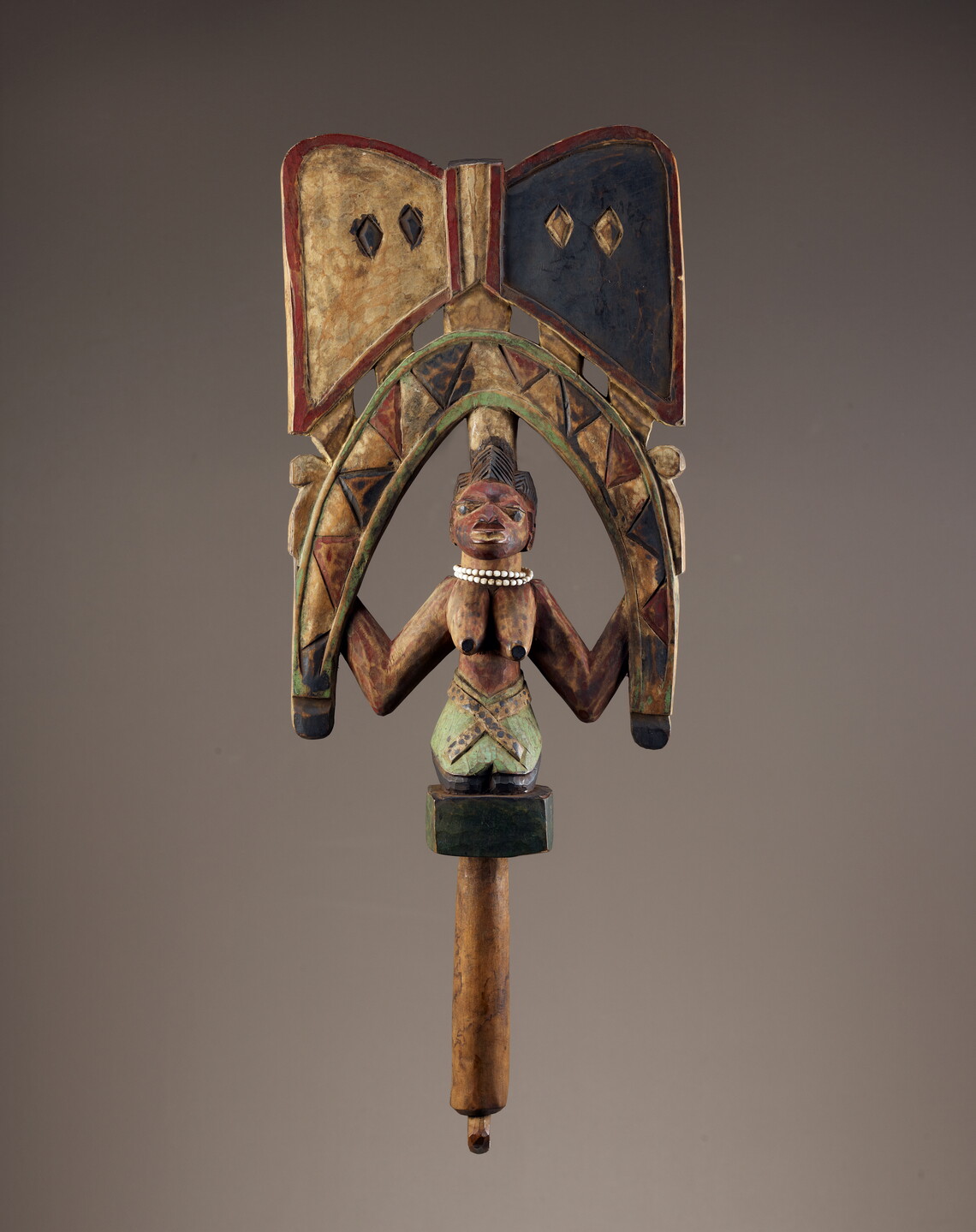
Source: This wooden osé Ṣàngó, or staff, was made in the mid-twentieth century by a Yoruba artist. Wood, glass beads, pigment, 58.4 x 22.5 x 8.3 cm (23 x 8 7/8 x 3 1/4 in.) (71-31-2 Gift of Dr. and Mrs. Albert E. Henn, Photograph by Franko Khoury, National Museum of African Art, Smithsonian Institution)
From the catalog record for this object on the website of the Smithsonian Institute:
“This staff was carried in ceremonies and dances to honor Shango, the Yoruba orisha (god) of thunder and a deified legendary king of Oyo-Ile (Old Oyo). The woman, a mother or potential mother, is considered particularly suitable for Shango-related imagery. Her nudity and kneeling pose suggest humility before a deity in a ritual setting. Following Yoruba artistic convention, she is portrayed as a physically mature but youthful woman, capable of bearing children and counterbalancing the hot-tempered virility of Shango. Children are considered to be blessings given from the god in return for devotion.
“Most figural oshe Shango consist of three sections--a handle, a female figure and a superstructure depicting two stone axes. The axes represent the thunderbolts hurled by the god to punish wrongdoers who have aroused his anger. Carrying goods on the head is commonplace in Africa, and priestesses literally bear images of the deity on their heads.”